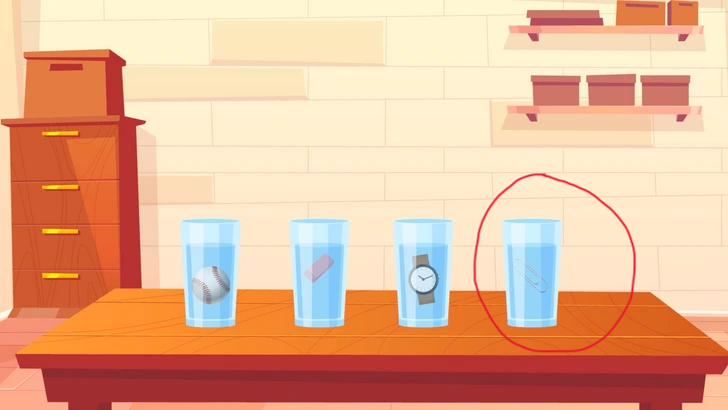Imagine four glasses filled with water to the same visible level, each containing a different object – a baseball, an eraser, a wristwatch, and a paper clip. At first glance, it seems like all the glasses have the same amount of water. But, as the saying goes, appearances can be deceiving. The question is, which glass actually holds more water than the others?
To solve this puzzle, you need to think critically and look beyond the surface level. It’s essential to consider the volume of the objects and how they displace water. Many people make the mistake of assuming that the water levels are the same, so each glass must contain the same amount of water. However, this assumption overlooks the crucial fact that the objects take up space and displace some of the water.
Another common mistake is focusing solely on the water’s surface level and ignoring the object submerged within the glass. Each object has a different volume, which affects the actual quantity of water left in the glass. The size and density of the objects also play a significant role in determining how much water is displaced.
To solve the puzzle, you need to break it down step by step. Start by examining the objects in each glass and considering their size and volume. Then, apply the principle of water displacement, which states that an object displaces a volume of water equal to its own volume. This means that larger objects will displace more water, leaving less water behind in the glass.
By analyzing each object and applying the principle of water displacement, you can determine that the glass with the paper clip contains the most water. This might seem counterintuitive at first, but it makes sense when you consider the size and volume of the paper clip compared to the other objects.

Puzzles like this one are an excellent way to exercise your brain and improve your critical thinking skills. They require you to think creatively, analyze information, and apply scientific principles. By solving puzzles like this, you can sharpen your problem-solving skills, enhance your observation skills, and boost your confidence in tackling challenging problems.
So, the next time you’re faced with a brain teaser, remember to think critically, analyze the information carefully, and apply scientific principles. With practice and persistence, you’ll become a master puzzle solver, and your brain will thank you for the workout.


